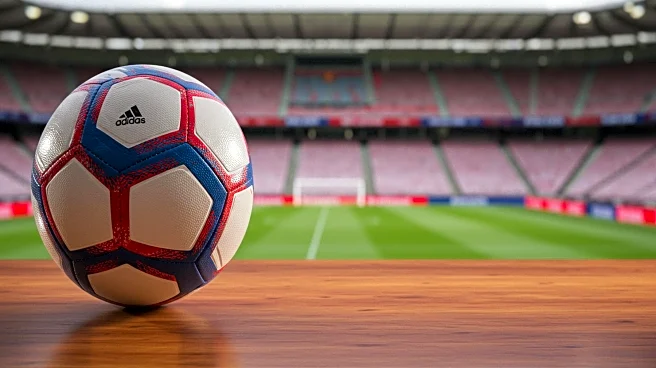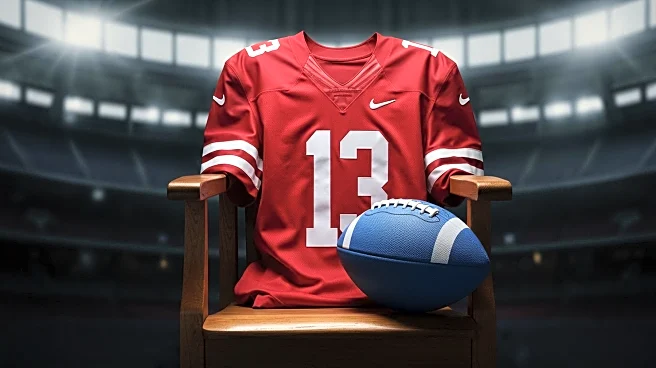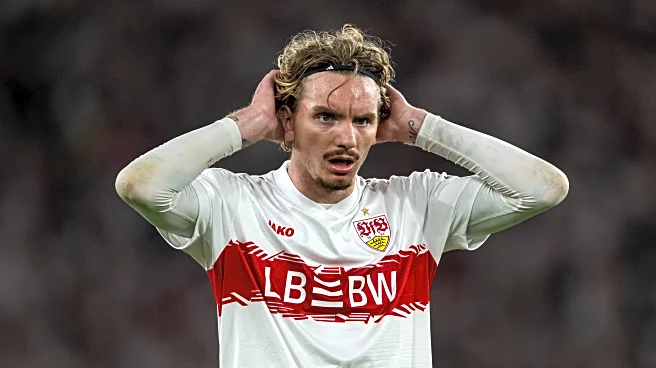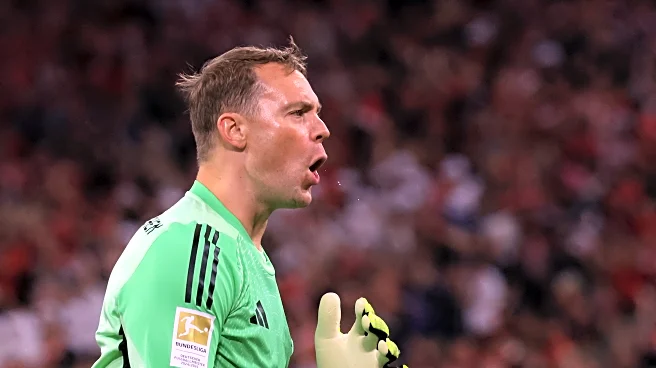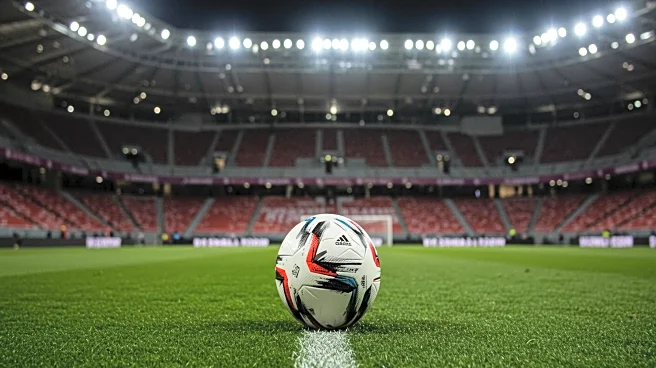What's Happening?
Manchester United is under pressure to sell players before the current transfer window closes, with Rasmus Hojlund potentially leaving the club. The team's summer spending has exceeded £200 million ($270 million), necessitating player sales to comply with financial regulations. Napoli has intensified its pursuit of Hojlund following Romelu Lukaku's injury, which left them without a recognized striker. The Italian club has reportedly engaged in direct discussions with Hojlund and his father, Anders, and the 22-year-old has shown interest in Napoli's project. The deal's timeline depends on finalizing details between the clubs, including salary and transfer structure. United is open to either a permanent deal or a loan with a mandatory purchase obligation in 2026, with figures around £34 million ($46 million) plus £4 million ($5.5 million) in loan fees under negotiation.
Why It's Important?
The potential transfer of Rasmus Hojlund is significant for Manchester United as it seeks to balance its financial books after substantial summer spending. Selling Hojlund could help the club adhere to financial regulations and avoid penalties. For Napoli, acquiring Hojlund would fill a critical gap in their striker lineup, enhancing their competitiveness in Serie A and the UEFA Champions League. The move could also impact the dynamics of player transfers in European football, influencing market values and club strategies. Both clubs stand to gain from the transaction, with United potentially easing financial pressures and Napoli strengthening its squad.
What's Next?
The next steps involve finalizing the transfer details, particularly the salary package and purchase obligation. Napoli is expected to present its final terms within 48 hours, aiming to close the deal swiftly. Manchester United will continue to monitor the situation, ready to proceed once an agreement is reached. The outcome could trigger further player movements in the transfer market, as clubs adjust their rosters before the window closes. Stakeholders, including club officials and fans, will be watching closely to see how the negotiations unfold and what impact the transfer will have on both teams.
Beyond the Headlines
The transfer saga highlights the financial pressures faced by top football clubs, especially those without the cushion of European football revenues. It underscores the importance of strategic player management and the need for clubs to balance spending with income. The situation also reflects the competitive nature of the transfer market, where clubs must act decisively to secure key players. Additionally, it raises questions about the long-term sustainability of high transfer fees and player salaries in the sport.
